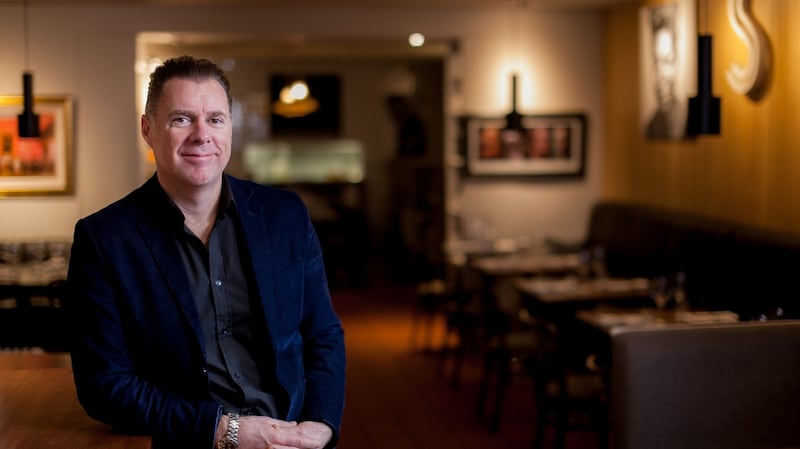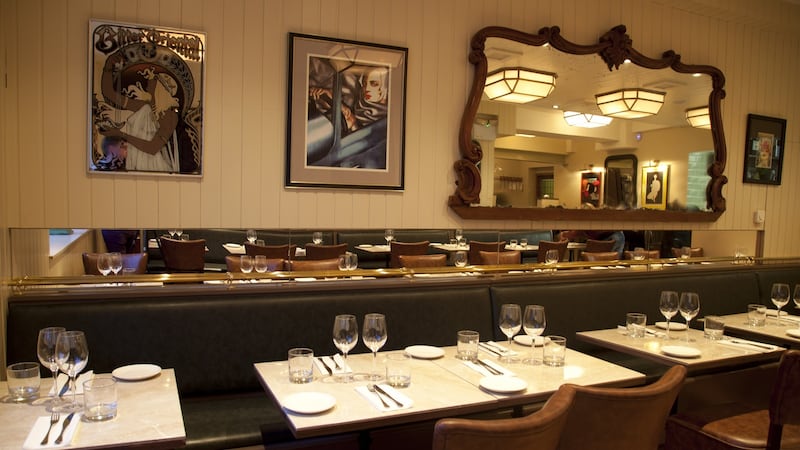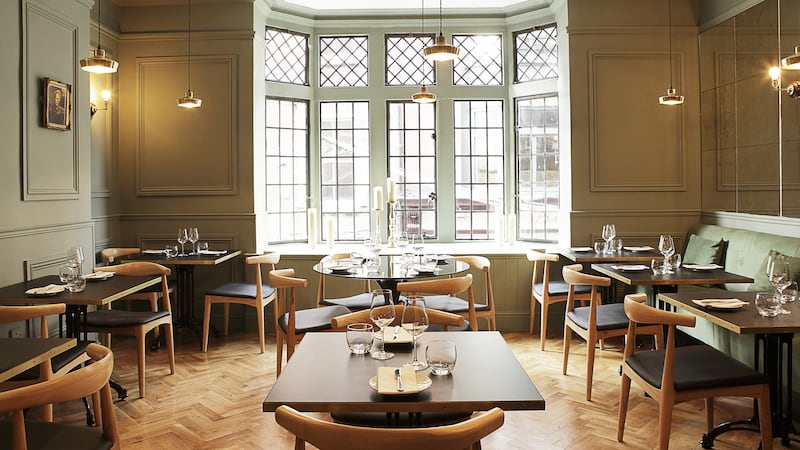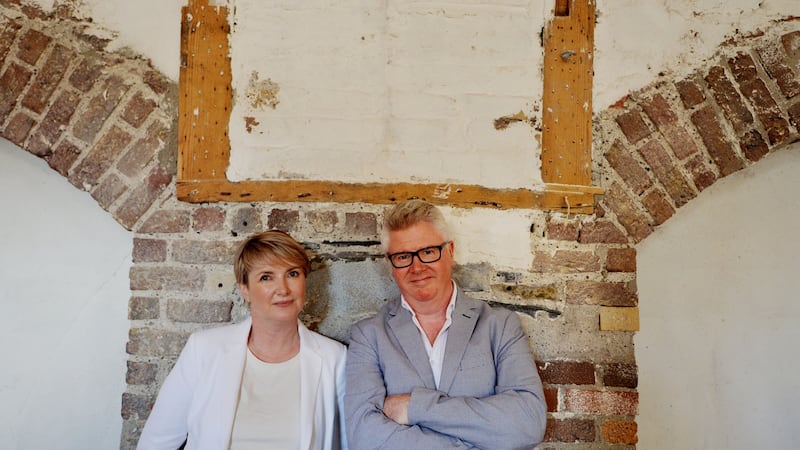In the early hours of Wednesday, July 12th, the chef Gavin McDonagh posted a link on his Facebook page to a video outlining how, in most instances, 90 per cent of the cash a customer spends in a restaurant is eaten up by the proprietor’s overheads.
Seven days later he was back on social media, this time announcing the closure, with immediate effect, of Brioche, the high-profile restaurant in the Dublin suburb of Ranelagh where he was head chef and joint owner.
Within 24 hours another chef, Kate Lawlor, followed suit, using Twitter to announce the demise of her Cork city-centre restaurant, Fenn's Quay.


The sudden shuttering of these two high-profile businesses, along with the recent closures in Dublin of Stanley's, on St Andrew's Street, Zen, in Rathmines, and Seapoint, in Monkstown, has sent shock waves through the industry.
"To date this year 49 of our members have closed their business. That is more than one restaurant a week closing its doors in 2017," says Adrian Cummins, chief executive of the Restaurants Association of Ireland (RAI).
The downturn that hit Ireland in 2008 is regarded as having fuelled a wave of creativity in the restaurant industry. As rents dropped in those years, new blood came in, opening casual, bare-bones operations, sometimes in out-of-the-way locations, and price-conscious diners chose good value over fine linens.
After a period when new openings hit the headlines faster than reviewers could sharpen their pencils, could it be that there are now just too many dining rooms to choose from, in the capital in particular?
"In Dublin city centre the block of South William Street to South Great George's Street has seen over 3,000 new restaurant seats, in that area alone. Since January of this year, in Cork city there have been seven new openings. In Drogheda there have been 15 new openings in the past seven to eight months," Cummins says.

According to the RAI, Ireland has 2,628 restaurants, 905 of which are in Dublin. That number does not include hotel dining rooms, pubs that serve food, or cafes. The RAI has a membership of 2,030, a mixture of restaurants, hotels and gastropubs.
"The three to four months before closing were probably the toughest in my nine years open," says Shane Kenny, who took the decision to close his Seapoint restaurant, in Monkstown, Co Dublin, on May 7th "with massive reluctance". After failing to finalise the sale of his lease, he says, he "was into unknown territory and made the tough decision to literally hand back the keys".
What’s to blame?
Kenny and other restaurateurs are blaming the recent spate of closures on increasing raw-material and services costs, expensive insurance, fast-rising rent and rates, and a shortage of trained staff.
There have been suggestions that a Revenue crackdown on arrears in the sector may have precipitated the flurry of closures, but this was denied by a Revenue spokeswoman, who said: “Revenue’s debt-management data-analytics application operates in respect of all debt-management cases based on risk, not based on sector.”
A significant reduction in the numbers of tourists visiting from the UK, because of Brexit uncertainty and fluctuating exchange rates, has also been blamed by some restaurateurs for falling revenues.
Ireland is an expensive place to have a holiday . . . There will almost certainly be casualties, which is sad considering how positive the market looked over the last couple of years
Robert Collender, who runs the seasonal Mews restaurant in Baltimore, Co Cork, with James Ellis from Easter to the end of September, says he is seeing "a significant difference in business numbers" this year. He attributes this to fewer UK tourists on the ground, and more Irish holidaymakers choosing to go abroad rather than holiday at home.
“We are noticing a definite drop in tourist numbers, and when we get to the end of September we will know how significant this is. The reality is that Ireland is an expensive place to have a holiday, at current rates, compared to other European destinations,” he says. “There will almost certainly be casualties, which is sad considering how positive the market looked over the last couple of years.”
Staff shortage
The shortage of trained kitchen staff is a perennial problem for Irish restaurateurs. The RAI estimates that 1,800 chefs graduate each year from certified culinary training programmes in Ireland, while 5,000 new entrants to the profession are required annually to meet current demand.
"Finding and retaining quality staff is the number-one challenge facing our industry," says the chef James Sheridan, who opened Canteen Celbridge with his partner Soizic Humbert 14 months ago. Sheridan's restaurant has been widely critically acclaimed, and it is regularly fully booked, but still Sheridan reports that his first year there has been "extremely challenging".
He echoes the views of the industry when he says that retaining the 9 per cent VAT rate will be crucial. “The threat of an impending rise in the VAT rate is all well and good in some union leader’s soundbite, but the reality is, if the VAT rate changes, someone is leaving my business.”

The concern about staffing is shared by Máire Flynn, coproprietor, with her chef husband, Paul, of the Tannery restaurant, in Dungarvan, Co Waterford, which this month celebrated 20 years in business. “The biggest difficulty we face is the chef shortage, which is an ongoing struggle and has become wearing,” she says.
Finding chefs isn’t the only thorny issue facing Irish restaurateurs, however. “Rents, rates and rising wage costs” are the key concerns, according to Pádraic Óg Gallagher, whose Boxty House has been in business in Temple Bar in Dublin for 28 years.
Cost increases
Wade Murphy, chef-proprietor at 1826 Adare, which he runs with his wife and business partner, Elaine, says that the difficulties they face in running the business they opened four years ago include ongoing operational cost increases. "All costs are rising, including food cost, and these are not being passed on to the consumer, as their focus is still on looking for value for money."

This view is shared by Elaine Murphy, a restaurateur and co-owner, with Brian Montague, of five Dublin eating houses, including the Winding Star, the Washerwoman and the gastropub the Legal Eagle, due to open on Chancery Place early next month.
“Restaurants are under huge pressure at the moment from rising costs and ever-growing pressure on pricing. There will be some serious consequences unless the Government take a view on rent capping – for the domestic sector too: our staff face increasing financial pressures – insurance costs, rates, compliance costs and utilities.”
According to Adrian Cummins, the mood among his organisation’s members is sombre. “The restaurant industry is a fiercely competitive and difficult one. There are constant new entrants to the market, high failure rates and high burnout rates. At a recent council meeting of the RAI, made up of business owners throughout Ireland, all agreed that business at present is particularly difficult. Staying alive is their new motto.”

Fear is seeping into the industry, too, and there’s much speculation about who might be next to go to the wall. “I look at so many restaurants today operating too close to the wind to continue. This can’t be good, emotionally, for all involved,” Shane Kenny says.
“Obviously there is concern,” Wade Murphy says about the recent sudden closures. “These were established restaurants, run by extremely hard-working people.”
For Máire Flynn it is the emotional cost that attaches to a restaurant failing, as well as the financial cost, that is foremost. “It’s always upsetting to hear of a closure, because the hospitality industry in Ireland is close-knit, with all of us looking out for each other. It’s a tough, tough business with many unpredictable variables.”










